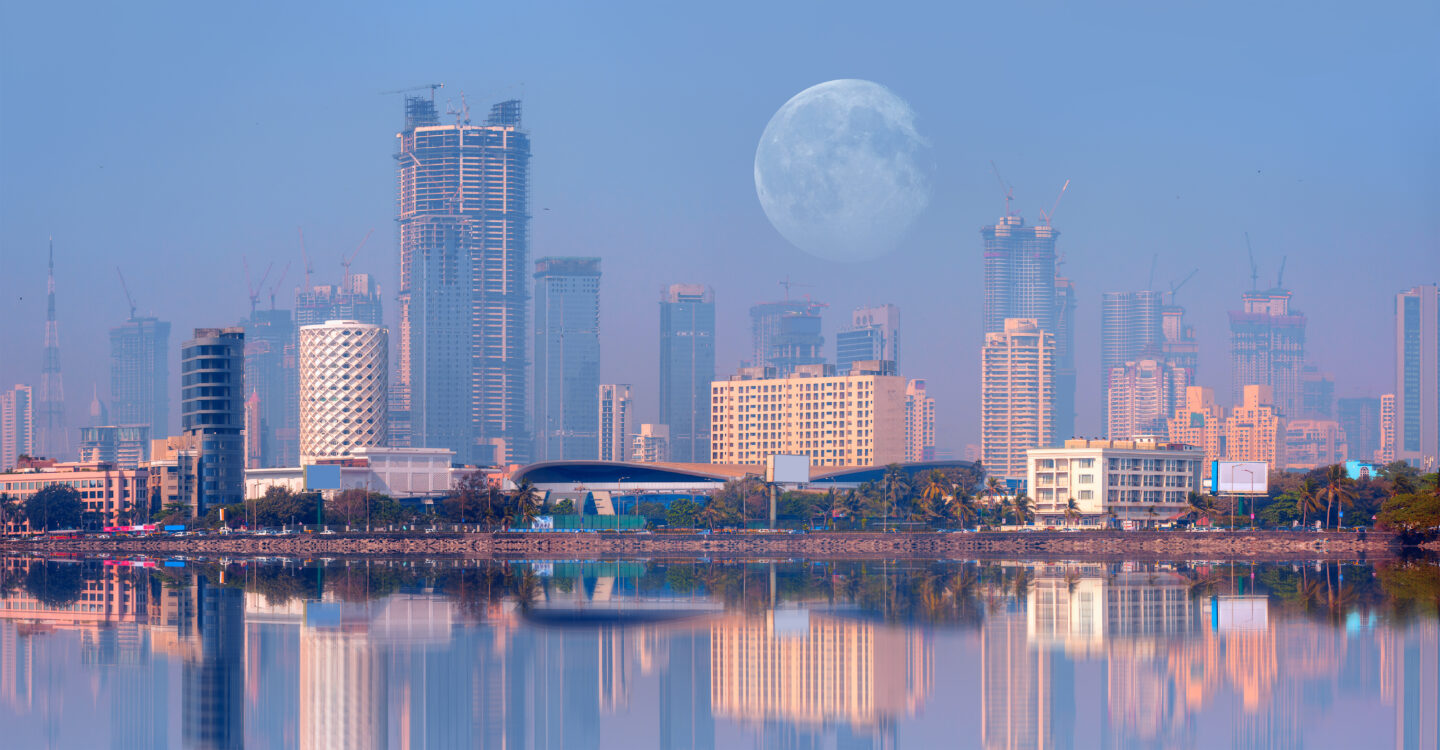
How to manage power dynamics in high-stakes negotiations
Former FBI agent Joe Navarro explains how to leverage non-verbal cues, manage power dynamics, and build trust to overcome deadlocks in negotiations....

by Richard Baldwin Published July 8, 2024 in Competitiveness • 6 min read
An Indian general election is an awe-inspiring event. More than 969 million citizens – well over 10% of the global population – were eligible to vote over a six-week period. The results of the election on 3 June secured a third term in office for Narendra Modi’s Bharatiya Janata Party (BJP).
The mammoth poll is a reminder that India is a country on an entirely different scale from most others around the world. Modi’s success reflects his ability to harness that magnitude to drive India’s economy forward. Indeed, such is its momentum that India is rapidly becoming an economic superpower.
Certainly, the UN’s announcement in 2023 that India had finally overtaken China as the world’s most populous nation felt pivotal. If the dominant economic narrative of the past 25 years was China’s economic miracle, the coming decades look likely to belong to India.

The transition is well underway. The International Monetary Fund (IMF) estimates that India’s economy grew 7.8% in 2023, and expects it to deliver another 6.8% growth in 2024. China, by contrast, managed only 5.2% in 2023 and the IMF predicts its growth will slow further, to 4.6%, this year.
According to Goldman Sachs, this will be far from a temporary phenomenon. The investment bank predicts that India will consistently grow more quickly than China over the years to 2050 – and will have overtaken the US as the world’s second-biggest economy by that date, closing in on China in the number one spot.
Financial investors are buying in. The Indian stock market has hit a series of record highs over the past 18 months, with its total capitalization exceeding $4trn at end-2023. The value of companies quoted on the National Stock Exchange of India increased by 50% over the year to February, with the exchange now the world’s sixth-largest.
India tripled its share of global manufacturing production between 1995 and 2020 without ever consistently breaking into surplus on industrial goods.
It is interesting to examine how India reached this point. Leaving aside the country’s world-leading IT sector and consistent trade surplus, the Indian government has never aspired to transform the country into an export powerhouse. With no direct access to the South China Sea, or the North Atlantic and Pacific oceans, it recognized that India was not an ideal base for multinationals seeking to offshore their supply chains.
The determination of some organizations to reduce their dependency on China has moved the dial a little, with companies such as Apple already switching some production to India. The government now offers incentives worth $26bn a year to entice other manufacturers in 14 key sectors of the economy. Until recently, however, India’s industrialization had focused on manufacturing for the domestic market.
Owing to the size of that domestic market, this is a viable prospect. India tripled its share of global manufacturing production between 1995 and 2020 without ever consistently breaking into surplus on industrial goods. India is the world’s largest producer of motorbikes but, unless you’ve been there, you’ve probably never seen one of them.

“As well as investing in physical infrastructure, India’s government has overseen an overhaul of the nation’s digital networks, dramatically improving connectivity.”
Combined with an export-driven services economy, India’s drive to industrialize for the domestic market has boosted wealth creation. According to data from the Brookings Institute, India’s “consumer class” now numbers around 475m – and has been growing at more than 30m a year in recent times. That creates an enormous market for consumer goods businesses, both Indian and international, particularly given the relative youth of the Indian population, whose average age is just 30.
Traditionally, India’s poor infrastructure has held those consumer goods businesses back, with a consequent drag on the economy as a whole. Poorly developed transport networks make it difficult to get goods to customers. However, India has made huge progress in this area, with the Modi government investing in roads, ports, airports, railways, power and telecoms. In the past decade alone, the country has built 34,000 miles of national highways.
As well as investing in physical infrastructure, India’s government has overseen an overhaul of the nation’s digital networks, dramatically improving connectivity. Indian consumers routinely use their phones to access basic financial services. State benefits are delivered digitally. Private-sector companies are tapping into these networks to drive innovation. And there is more to come. Modi has promised that capital spending will reach 3.3% of the country’s GDP this year.
Urbanization is another factor strongly in India’s favor. The transition from rural to industrial economy is gathering pace and Indians are relocating accordingly. By 2035, 600 million people (some 40% of the population) will live in towns and cities, up from 31% in 2011.

Naturally, these shifts bring challenges as well as opportunities. India’s youth unemployment rates have spiked sharply over the past couple of years, from 6% in 2012 to 10% today, with job creation in non-farm sectors struggling to keep pace with population growth. Increased public-sector employment may help the Indian state to cope with its own expansion. Modi also believes his plans for further investment in infrastructure – including the green energy transition – will boost job creation.
Attracting more international employers to India might also provide additional opportunities for young workers. This is one reason why India has slowly but surely dropped many of the restrictions on multinationals entering its market. This is the case even in the retail sector, where successive governments have sought to protect the nation’s traditional “mom ‘n’ pop” stores.

“Nevertheless, the recent history of such ventures justifies caution, with many international companies struggling to make progress in India and heading for the exit.”
Given the size of the Indian market and its rising disposable incomes, Western businesses will naturally be interested. Nevertheless, the recent history of such ventures justifies caution, with many international companies struggling to make progress in India and heading for the exit.
Headline examples range from US carmaker Ford to German retailer Metro. Disney is trying to sell its Indian streaming business. Warren Buffett’s Berkshire Hathaway sold its stake in the Indian payments fintech Paytm. Making money in India’s fast-growing economy turns out to be harder than expected.
Operating margins in India tend to disappoint, with overseas businesses routinely failing to match the performance of their Indian counterparts, according to recent analysis from BCG. The level of bureaucracy can feel stifling. India’s tough labor laws, moreover, often come as a shock to businesses from more laissez-faire economies.
Indeed, foreign direct investment (FDI) in India has been broadly flat over the past five years. One recent government report found that, while 11,000 foreign firms began trading in India between 2014 and 2021, almost 2,800 quit the country during the same period. That’s a daunting failure rate.
The evidence suggests that, with patience and persistence, multinationals can build a thriving business in India.
Against these salutary tales, there are also plenty of examples of success, particularly where Westen businesses have pursued joint ventures. Hindustan Unilever, the Indian business of Unilever of the UK, remains one of India’s largest companies. Japanese carmaker Suzuki’s alliance with local manufacturer Maruti sells more vehicles than any other automotive brand. Google and Meta have built partnerships with Reliance Industries, India’s biggest conglomerate.
That’s not to rule out standalone ventures, either. Samsung has enjoyed growing success with its smartphone business. Another Korean business, Hyundai, is running Maruti Suzuki a close second in the automotive industry, while Honda’s motorbike sales are growing fast.
Nor is multinational investment in India limited to consumer-facing businesses. Some manufacturers are keen to follow Apple’s lead, increasing production in India for the export market. Denmark’s Vestas now produces wind turbines for sale abroad. Tesla has discussed setting up an electric vehicle (EV) factory.
Others are manufacturing for the home market, betting on Modi’s investments in infrastructure. The Indian subsidiary of engineering giant ABB, for example, is outperforming its European parent by a factor of two-and-half times.
The evidence suggests that, with patience and persistence, multinationals can build a thriving business in India. Given the country’s economic prognosis for the decades to come, many chief executives will conclude that it is worth committing to India for the long haul.
Moreover, for all the bumps in the road, given the geopolitical backdrop and China’s recent economic struggles, of the two giants India now offers a more comfortable prospective ride. Global economic leadership appears to be changing hands.

Professor of International Economics at IMD
Richard Baldwin is Professor of International Economics at IMD and Editor-in-Chief of VoxEU.org since he founded it in June 2007. He was President/Director of CEPR (2014-2018), a visiting professor at many universities, including MIT, Oxford, and EPFL, and a long-time professor of international economics at the Graduate Institute in Geneva. Richard is an expert in global economic policy and theory, specializing in international trade.

May 6, 2025 • by Anna Cajot in Competitiveness
Former FBI agent Joe Navarro explains how to leverage non-verbal cues, manage power dynamics, and build trust to overcome deadlocks in negotiations....

April 24, 2025 • by Jerry Davis in Competitiveness
Many regional developers have tried and failed to emulate Silicon Valley’s VC-driven model for innovation. Detroit, the birthplace of Ford, is following an alternative route – with promising results....
 Audio available
Audio available
April 16, 2025 • by Benoit F. Leleux in Competitiveness
How a private equity-backed corporate carve-out created a successful, sustainable consulting powerhouse...

April 11, 2025 • by Jim Pulcrano, Jung Eung Park, Christian Rangen in Competitiveness
Founders searching for funding must be targeted in their approach to securing a lead investor. A global survey of VCs offers valuable insights into what makes them tick....
Explore first person business intelligence from top minds curated for a global executive audience